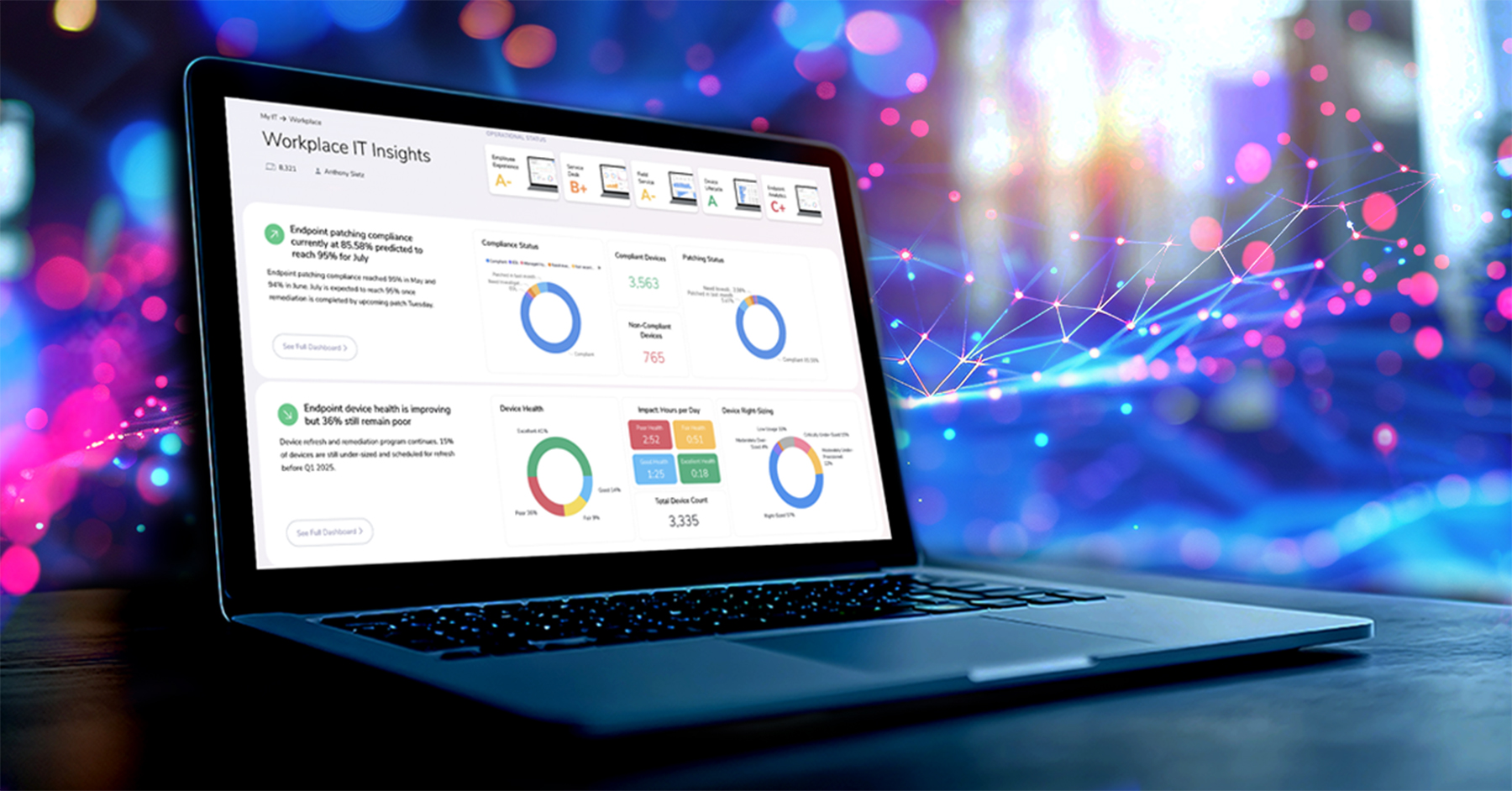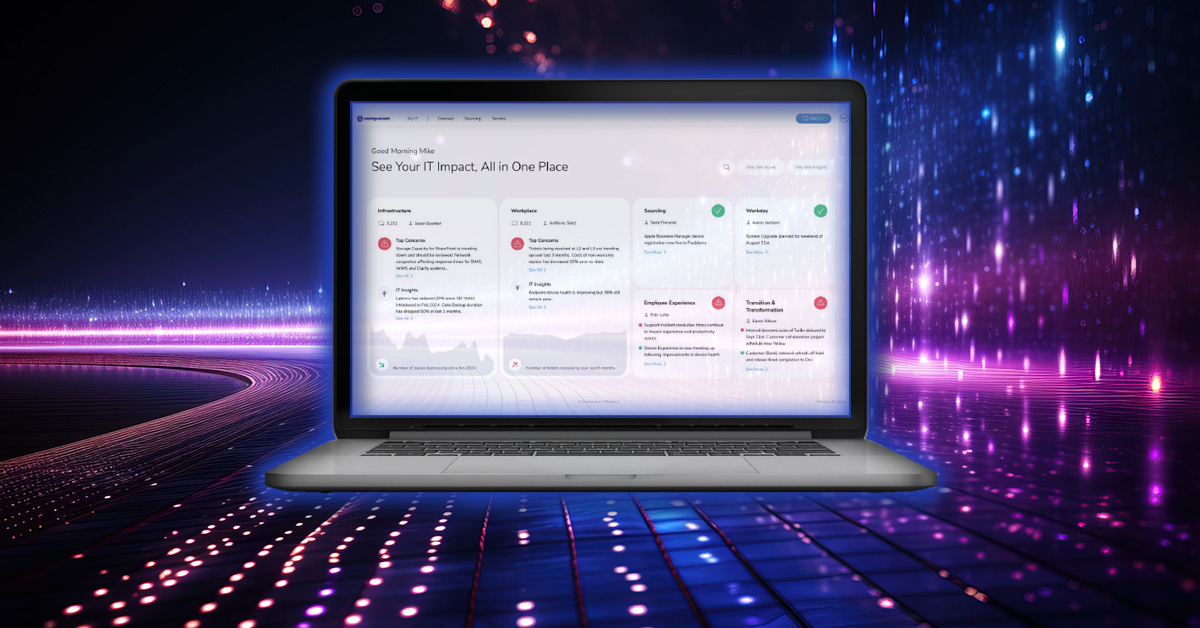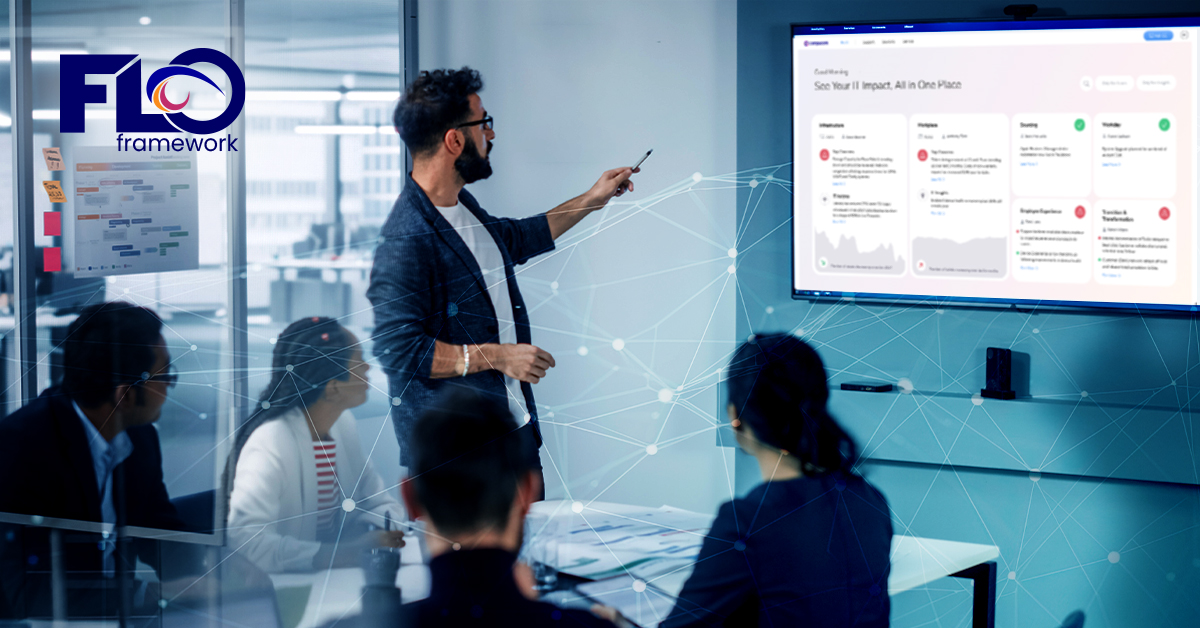- Managed Services and IT Support
- DEX


David Krauthamer • Staff Writer
Self-Service and Expert Support
Previously, we introduced the four dimensions of Digital Experience Management (XM) that Compucom has identified and how effective management through data gathering and analytics can help to create the ideal hybrid workplace for your employees.
These four dimensions are divided into two main categories: technology-based and support-based. Our last blog looked at the two technology-based dimensions of XM: Technology-Enabled and Workplace Flexibility. This blog will explore the support-based dimensions of Self-Sufficiency and Well-Supported.
These four dimensions can be divided into two main categories: technology-based and support-based. Let’s begin by looking at the two technology-based dimensions of XM: Technology-enabled and Workplace Flexibility.
DEX: How Different Support Models Affect Experience
From the CEO to the mailroom clerk, like it or not, you’re going to occasionally need IT support — and likely when you can least afford the interruption.
When we make a support request, we’re looking to rapidly regain control through a comfortable support experience that fits the urgency level. Fortunately, IT support services come in a variety of flavors to suit different preferences. There are support channels to accommodate everyone, from the DIYer who thrives in forums and search engines to the not-so-tech-savvy senior manager who calls the “IT Guy” for almost everything.
With the prevalence of hybrid and remote work, IT support touches almost every area, from hiring and onboarding to the offboarding process. Support models have evolved to ensure that every touchpoint along the employee journey creates the right experience for employee retention and productivity.
It’s about keeping your employees happy. Whether driving self-sufficient support or providing expert high-touch experiences, XM measures, analyzes, and ultimately offers service improvements throughout your employees’ tenure.
Support: Self-Sufficiency Drives Productivity
Self-sufficiency means different things to different people. Some of us DIYers like to do everything ourselves, while others just prefer easy access to help when needed. No matter how a person uses self-service support solutions, their goal is maintaining productivity.
Determining how well self-service support drives end-user self-sufficiency requires asking and answering some key questions:
- Do your employees have quick and easy access to self-service support solutions?
- What is their perception and satisfaction with the self-support solutions your organization provides?
- Are the self-service support options effective in restoring optimal productivity and increasing job satisfaction and loyalty to your company?
For today’s hybrid employees to work efficiently, they must have easy access to trusted self-service technical help through their preferred channels (apps, knowledgebase articles, forums, or AI-enabled). Having a robust selection of easy-to-use support options that enhance self-sufficiency will go a long way in keeping your people happy and productive.
Support: A Great Support Experience from Day One
Making sure your workers are well-supported shows them they are valued; it demonstrates your belief in their ability to succeed when given the right tools, such as readily available expert guidance when they need it most. And this should start from day one.
Troy Baldwin, Compucom’s Director of Digital Experience Management, when asked about the importance of providing employees a great experience from day one, said, “I’d put it right at the top. We commissioned a survey last year that found user frustrations with technology had caused more than 60% of those asked to look, apply, or leave for other jobs, and 12% of enterprise respondents actually switched. So, is it important? Yes.”
To help determine how well-supported your employees are, XM analyses key experience indicators based on these questions:
- How was your onboarding experience?
- What has your experience been like for your device lifecycle services?
- When engaging expert support, how was your support experience?
- How do you feel about the overall experience from beginning to end?
These questions and the indicators associated with them help us to understand and improve how users consume and perceive IT services without having to repeatedly tap them on their shoulders to ask: how’s it working now?
Four Dimensions. One Great Experience.
Compucom’s focus is helping our customers achieve a productive, distributed workforce, and Digital Experience Management is one way we achieve this. By harnessing the power and insights of key experience indicators, we are able to drive employee productivity and satisfaction.
But don’t just take our word for it; Gartner also understands that “near real-time processing of aggregated data from endpoints, applications, employee sentiment, and organizational context helps surface actionable insights” that help drive continuous improvements.
In our next post, we’ll bring the Four Dimensions of Digital Experience Management together and find out how implementing XM foundationally across managed services and solutions is a win-win for employers and employees.
The Digital Experience Series:
RecenT

9 Ways Strategic IT Staffing Empowers Organizations

Case Studies: Asset Intelligence and Endpoint Compliance Made Easy

AI and the Enterprise: The Future of IT Management

Exploring the Opportunities and Obstacles of AI in the Enterprise

One Dashboard to Rule Them All: Strategic IT Excellence with Full Lifecycle Observability

Transforming IT Operations with Full Lifecycle Observability: How Compucom’s FLO Framework Redefines Data-Driven Efficiency
TOPICS
Digital Employee Experience: The Role of Support
- Managed Services and IT Support
- DEX

David Krauthamer • Staff Writer
Self-Service and Expert Support
Previously, we introduced the four dimensions of Digital Experience Management (XM) that Compucom has identified and how effective management through data gathering and analytics can help to create the ideal hybrid workplace for your employees.
These four dimensions are divided into two main categories: technology-based and support-based. Our last blog looked at the two technology-based dimensions of XM: Technology-Enabled and Workplace Flexibility. This blog will explore the support-based dimensions of Self-Sufficiency and Well-Supported.
These four dimensions can be divided into two main categories: technology-based and support-based. Let’s begin by looking at the two technology-based dimensions of XM: Technology-enabled and Workplace Flexibility.
DEX: How Different Support Models Affect Experience
From the CEO to the mailroom clerk, like it or not, you’re going to occasionally need IT support — and likely when you can least afford the interruption.
When we make a support request, we’re looking to rapidly regain control through a comfortable support experience that fits the urgency level. Fortunately, IT support services come in a variety of flavors to suit different preferences. There are support channels to accommodate everyone, from the DIYer who thrives in forums and search engines to the not-so-tech-savvy senior manager who calls the “IT Guy” for almost everything.
With the prevalence of hybrid and remote work, IT support touches almost every area, from hiring and onboarding to the offboarding process. Support models have evolved to ensure that every touchpoint along the employee journey creates the right experience for employee retention and productivity.
It’s about keeping your employees happy. Whether driving self-sufficient support or providing expert high-touch experiences, XM measures, analyzes, and ultimately offers service improvements throughout your employees’ tenure.
Support: Self-Sufficiency Drives Productivity
Self-sufficiency means different things to different people. Some of us DIYers like to do everything ourselves, while others just prefer easy access to help when needed. No matter how a person uses self-service support solutions, their goal is maintaining productivity.
Determining how well self-service support drives end-user self-sufficiency requires asking and answering some key questions:
- Do your employees have quick and easy access to self-service support solutions?
- What is their perception and satisfaction with the self-support solutions your organization provides?
- Are the self-service support options effective in restoring optimal productivity and increasing job satisfaction and loyalty to your company?
For today’s hybrid employees to work efficiently, they must have easy access to trusted self-service technical help through their preferred channels (apps, knowledgebase articles, forums, or AI-enabled). Having a robust selection of easy-to-use support options that enhance self-sufficiency will go a long way in keeping your people happy and productive.
Support: A Great Support Experience from Day One
Making sure your workers are well-supported shows them they are valued; it demonstrates your belief in their ability to succeed when given the right tools, such as readily available expert guidance when they need it most. And this should start from day one.
Troy Baldwin, Compucom’s Director of Digital Experience Management, when asked about the importance of providing employees a great experience from day one, said, “I’d put it right at the top. We commissioned a survey last year that found user frustrations with technology had caused more than 60% of those asked to look, apply, or leave for other jobs, and 12% of enterprise respondents actually switched. So, is it important? Yes.”
To help determine how well-supported your employees are, XM analyses key experience indicators based on these questions:
- How was your onboarding experience?
- What has your experience been like for your device lifecycle services?
- When engaging expert support, how was your support experience?
- How do you feel about the overall experience from beginning to end?
These questions and the indicators associated with them help us to understand and improve how users consume and perceive IT services without having to repeatedly tap them on their shoulders to ask: how’s it working now?
Four Dimensions. One Great Experience.
Compucom’s focus is helping our customers achieve a productive, distributed workforce, and Digital Experience Management is one way we achieve this. By harnessing the power and insights of key experience indicators, we are able to drive employee productivity and satisfaction.
But don’t just take our word for it; Gartner also understands that “near real-time processing of aggregated data from endpoints, applications, employee sentiment, and organizational context helps surface actionable insights” that help drive continuous improvements.
In our next post, we’ll bring the Four Dimensions of Digital Experience Management together and find out how implementing XM foundationally across managed services and solutions is a win-win for employers and employees.
The Digital Experience Series:
Recent Blogs

9 Ways Strategic IT Staffing Empowers Organizations

Case Studies: Asset Intelligence and Endpoint Compliance Made Easy

AI and the Enterprise: The Future of IT Management

Exploring the Opportunities and Obstacles of AI in the Enterprise

One Dashboard to Rule Them All: Strategic IT Excellence with Full Lifecycle Observability




